Angler Attitude Can Increase Success During Tough Fishing Conditions
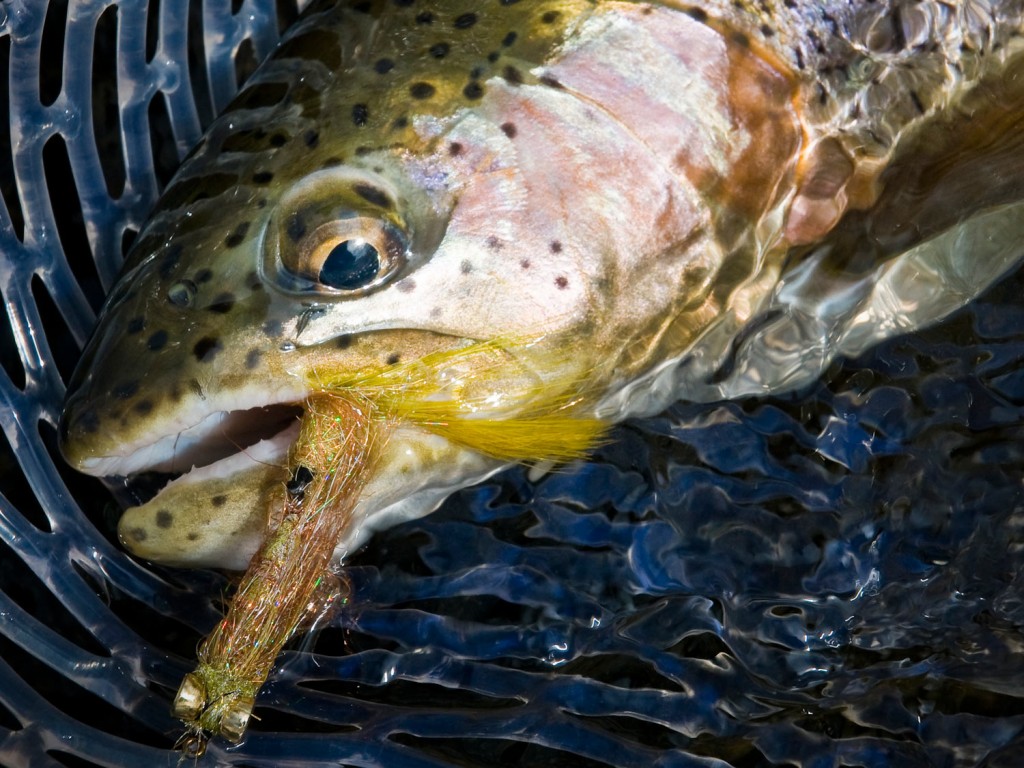
I’m grateful to have a full-time fishing partner that isn’t afraid to step it up when the going gets tough.
Louis Cahill is the epitome of this, he’s an angler that’s willing to do whatever’s necessary to put fish in the net, even when catching fish seems completely hopeless. In fact, he seems to shine when fishing conditions are really tough, and oddly as it may sound, sometimes I think he actually prefers bleak fishing conditions for the challenge and reward. It doesn’t matter if everyone on the river is getting their butts handed to them, Louis won’t except defeat until he’s given it everything he’s got. And here’s the real kicker, unlike many of us, I rarely have to pump Louis up for him to give me his absolute best on the water. All I have to do is get a serious look on my face, start cranking on the oars, and mention the words, “Let’s do this”. Nine times out of ten, he charges out the gates, like a horse at the Kentucky Derby, and ends up getting the job done by landing multiple big fish.
I think Louis has figured out how important angler attitude (staying positive, confident, grounded) is for catching fish, and many of us, including myself, need to take note. Louis openly acknowledges trout can be super technical and extremely difficult to catch at times, but he maintains a firm stance that trout don’t have a higher intelligence than us, and they can’t consciously pick and choose who they outsmart. This fishing attitude is why Louis can travel all over the world fly fishing uncharted waters and find success, and that’s why I eagerly follow his lead where ever he goes. The man always has a plan b, c, and d, if plan a fails to produce.
When fishing conditions are grim and we, as anglers, begin doubting our ability to catch fish, we often begin fishing below our skill level. Unaware, we begin straying away from our angler reasoning and fishng instincts, and in turn, we make bad fishing decisions on the water. We’ll find ourselves sticking with a dry dropper rig, because we’re seeing an occasional riser along the bank even though we’re getting no takes. We’ll continue fishing a specific fly pattern because it produced for us earlier in the day even though its been hours since we caught our last fish. Plain and simple, we stop thinking outside the box as anglers, and we
Read More »Don’t get yourself caught in a tight spot!
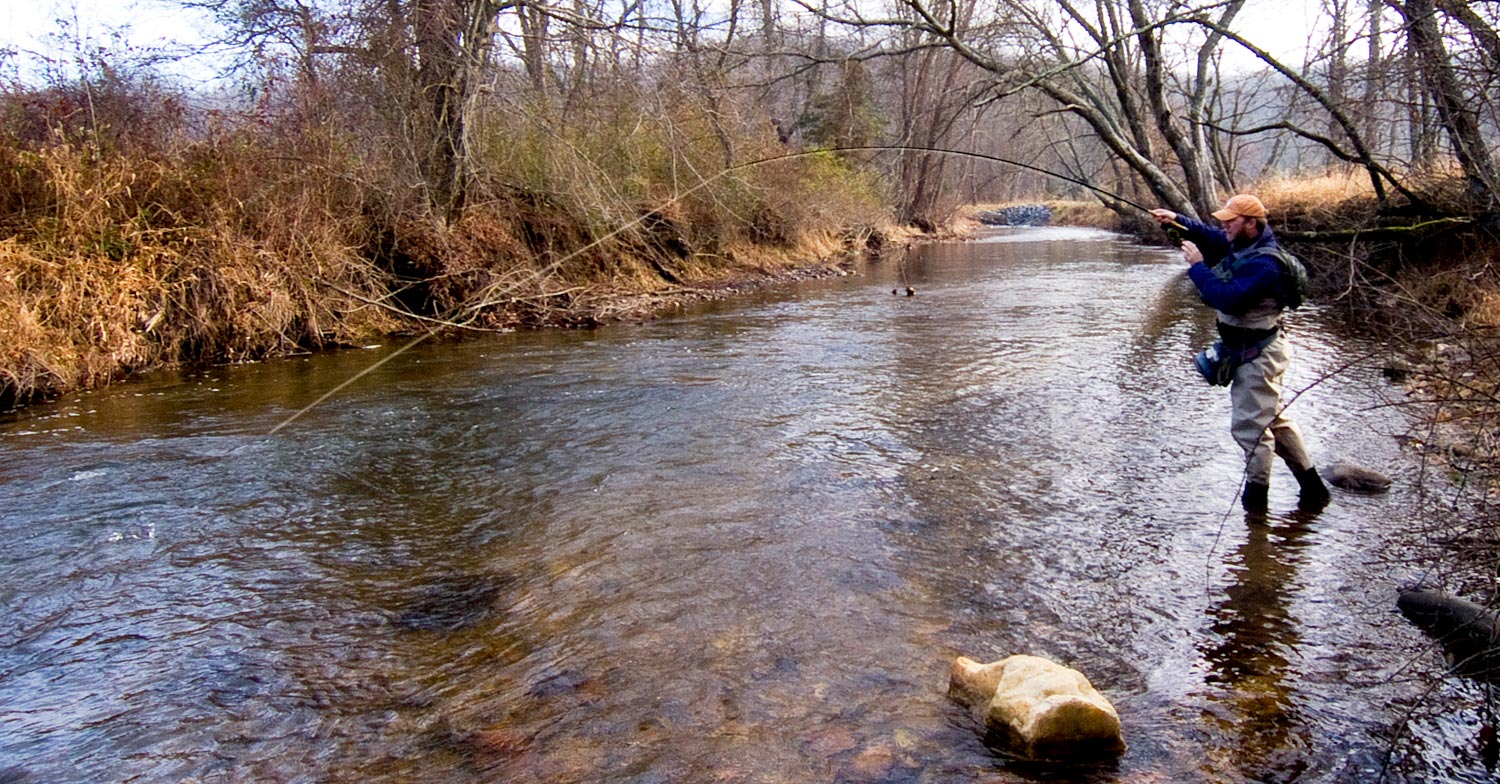
By Justin Pickett
“MY MOUTH SPEWED WITH EXPLETIVES. MY BUDDY’S FACE WAS BLANK. I KNEW THAT IT WAS THE RESULT OF SEVERAL POOR DECISIONS.”
Recently, I headed up north with a great friend of mine to fish a small stream in north Georgia. Over the past couple of years this destination had become one of our favorite pieces of water. The main reasons being the number of large brown trout found there, and how it seemed one of us would hook up with one these large residents every time we wet a line in its waters.
That Spring day was perfect. Cool temps. Cloudy skies. The water was just a bit stained from the rain the night prior.
We headed straight for the section of stream where, historically, we’ve had the best luck hooking up with some nice brown trout. Fishing our way up through this section, we were coming up empty handed. Only a couple of eager rainbows had bent our rods during the first couple of hours.
We typically fish together with alternating casts and different rigs. This has always proven successful, but today I decided to depart from our usual method and jump ahead of my fishing buddy. Straying further upstream, I figured we’d just holler at each other should we need help with something.
I approached a run that just looked fishy as hell. A shallow section of water dumped into a deep bucket and then cut under the far bank, which was lined with rhododendrons. At the tail of the run a tree branched out over the water providing shade and cover. It had trophy trout sanctuary written all over it.
My euro-rig that day consisted of a #6 black stonefly nymph, trailed by a #6 Vladi worm, and I had them tied to 3x and 4x fluoro tippet respectively. To say, I have confidence in this tandem on days where the water is stained, is an understatement.
On the second drift through the meat of this run, my rod translated a solid thump in the line. I lifted the rod tip and set the hook hard, and immediately I can feel
Read More »Articulated Nymphs, All Hype or the Real Deal?
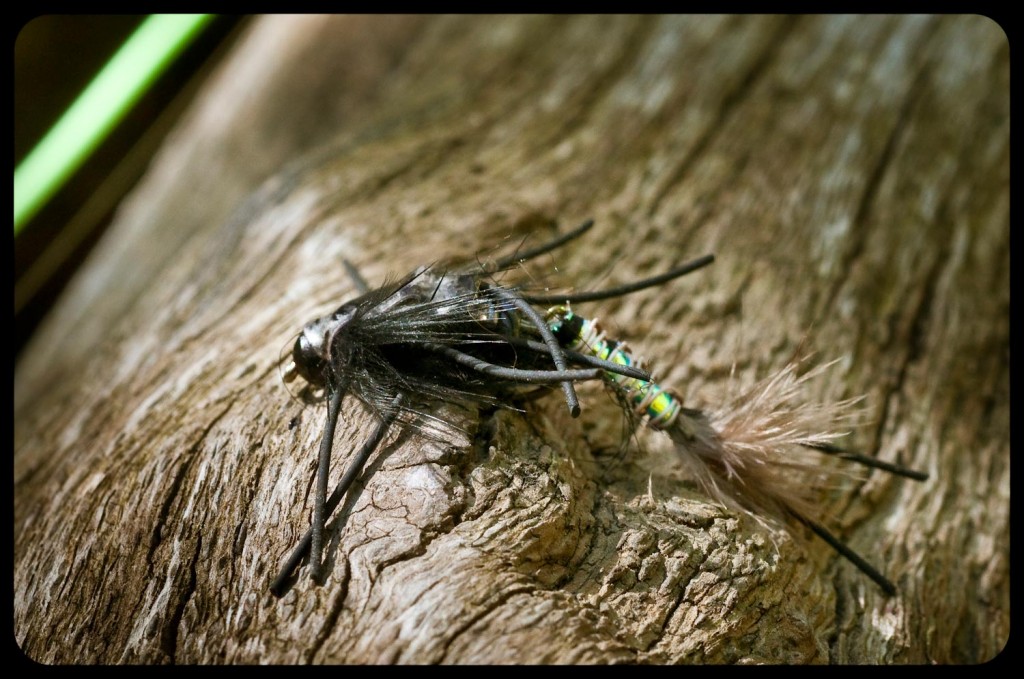
If you pull any serious streamer fisherman aside and ask them to name their favorite streamer pattern, chances are the fly pattern will be articulated.
Ask the same question instead to a serious nymph fisherman, and most will answer with names of nymphs that aren’t articulated. I agree you don’t have to fish articulated nymph patterns to catch trout, but I do find it a little odd that we aren’t seeing more of them in the spot light today. As far as I can tell, the concept has been around almost as long as articulated streamers have. The last couple of years I’ve started to incorporate articulation into my fly tying for many of my nymph patterns. Just about all of them have done very well for me on the water. In some cases, my articulated versions have caught trout 3 to 1 over the traditional non-articulated versions. You can’t tie all nymphs articulated because many fly patterns and species of aquatic micro-invertabrates are far too small. However, with some practice, most fly tiers will find it’s pretty easy to tie articulated nymph patterns as small as a standard size
Read More »Don’t Just Love Your Cold Water Fisheries, Be Good Stewards Also
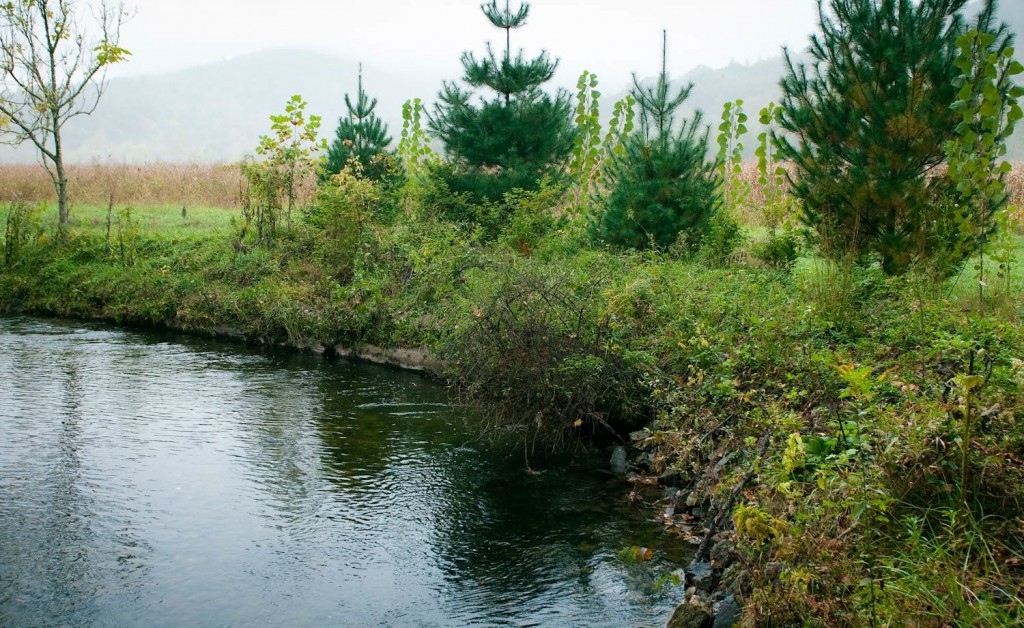
Most fly fisherman are passionate about the protection of their trout and salmon streams.
Promoting catch and release, special regulations and protecting various wild salmonid populations, are among the most common conservation topics being fought for today in the sport of fly fishing. But even as important as all of these topics are, there’s another area of conservation that I feel like is equally important, and is being put on the back burner. Why is it, that we aren’t’ also hearing people talking passionately about the importance of protecting our trout waters tree canopies, stream banks and 50 foot buffers (native shrubs and foliage)? After all, they’re essential elements in the conservation pie, and without them, it’s very difficult for any trout water, regardless of its size, to maintain the proper water quality and habitat that cold-water fish species demand for their suvival.
For example, the past five years, chronic drought conditions, poorly managed river/stream buffer zones and the occasional high wind thunderstorm have uprooted and destroyed an alarming amount of trees and foliage along my trout streams in the Southeastern United States. It hasn’t helped that during this depressing period there’s also been a large amount of our native hemlock forests decimated by the “hemlock woolly adelgid”, a beetle brought over from China and Japan, that sucks the life out of the trees by feeding on their sap. Put all of these negative forces together and they’ve really dealt a punishing blow to the health of the trout water in my area, and their ability to sustain year-round trout fisheries. Stream shade and foliage have been reduced greatly in areas, long stretches of stream banks have become un-stabilized and week, and silt introduction by erosion and runoff have become a serious problem. Water temperatures are reaching levels higher than we’ve ever seen in the past, and natural reproduction of our cold-water species are at an all-time low. The fish haven’t been the only species effected by these environmental cotastrophies. The aquatic insect, amphibian, and crustacean populations have been effected as well, with some species being wiped out almost completely.
Be Good Stewards of your trout water by giving back
Last year, to help combat these issues, I volunteered a day of my time to plant 150 eastern cottonwood trees on a private section of property along a trout stream I regularly guide on. The landowners purchased 8-14″ cottonwood tree cuttings from
Winter Fishing: Keeping Warm and Safe
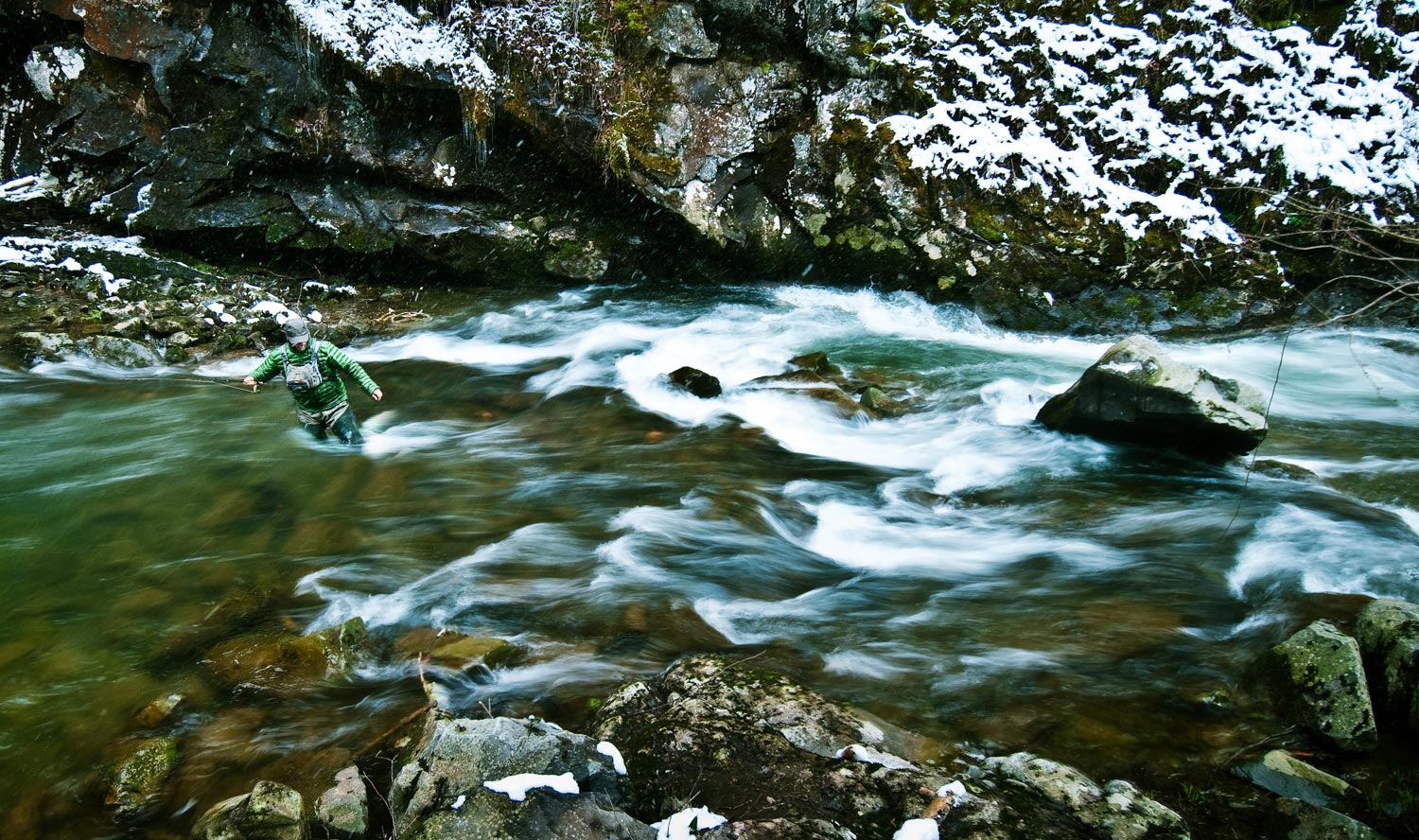
Winter can be a beautiful and exciting time for fly-fishing, but not without its risks.
“How important is it to carry a change of clothes?” a reader asked me the other day. “Well,” I thought, “I guess that depends on whether or not you fall in.” It’s been a long time since I carried a change of clothes for a day of fishing. I’ve spent some pretty soggy and miserable days on the water but I guess I don’t care that much. Still, there are times when being prepared for the worst just makes good common sense. I’ll give you a couple of examples.
Years ago, I was visiting friends in Colorado during February. A friend of a friend had told me about a good piece of water that didn’t get much attention, as it was about a five-mile hike down some railroad tracks to access it. The river was open and I was pretty excited to give it a go. That is, until the weather turned the night before.
The high that day turned out to be ten below. We never see temperatures anywhere close to that here in the south. I don’t mind the cold, but it got me thinking. I don’t know this water at all and there are some pretty tricky wading spots in Colorado. If I took a spill at ten below, five miles from the car or any heat, I’d probably die of hypothermia before I made it. I still fished that day, but I went to the Blue River and fished out back of the outlet mall. I figured in the worst case I could run into the Gap, throw on some dry clothes off the rack and worry about the public indecency charges later. It turned out I didn’t need that option but when I picked my foot up out of the water and watched it freeze before putting back down, I felt like I’d made a good choice.
I couldn’t help but think of a story I read years ago, I think it was in the Drake, about a fellow fishing Clear Creek, in Colorado again, one October. Late in the afternoon, he was hopping across a bolder-strewn bank when a big stone rolled and pinned his leg.
Read More »The Salt Water Quick Cast
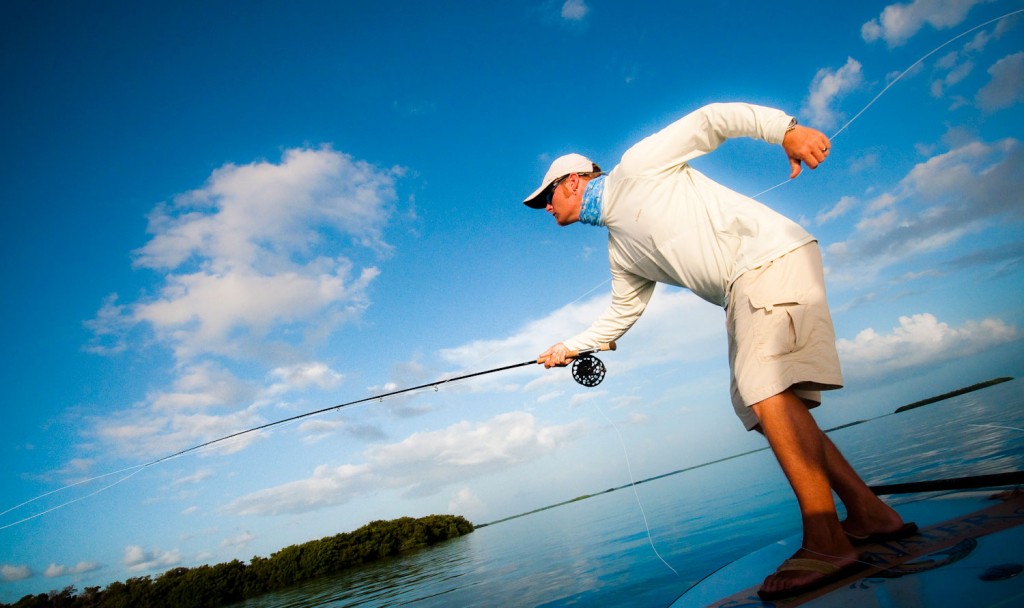
One of the most crucial skills in salt water fly fishing is shooting line.
Everything happens quickly on the flats and the angler who can put is fly on a fish sixty feet from the boat with only two false casts will have a distinct advantage.
It’s important to get the fly to the fish in a hurry but that’s not the whole story. In salt water the most effective presentation is one where the angler shoots line on the delivery. This keeps the fly line from spooking the fish during false casting, which is so important on calm days, and also helps in making a soft presentation. Because the tension from the line hand is released during the delivery the energy of the heavy salt water line dissipates much quicker. No big splash right in front of the fish when the fly lands.
To master the quick cast you will need a few skills in your bag. You must have an efficient double haul to generate the necessary line speed. You also must develop an aggressive back cast so you can shoot line behind you as well. Once you’ve mastered these techniques you’re ready to put your quick cast to work and you’ll catch a lot more salt water fish.
Here’s Capt. Joel Dickey to show you how it’s done.
Read More »Changing Your Mind About The Off Shoulder Spey Cast
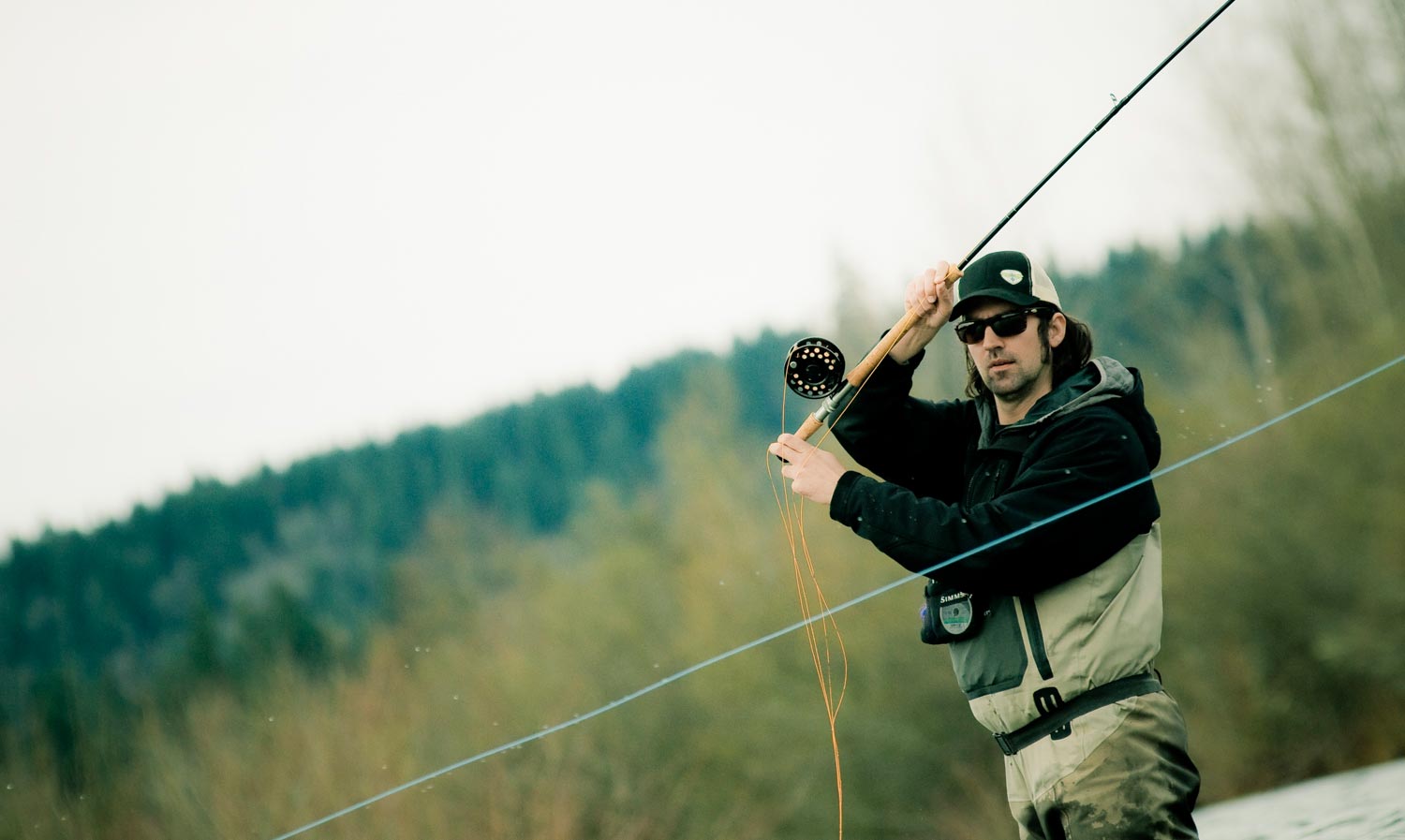
By Louis Cahill
Most anglers, myself included, struggle with making a spey cast off their non-dominant side.
As a right-handed caster, it has always felt unnatural for me to cast off my left shoulder. It’s almost the two-handed equivalent of casting left handed. Because it feels awkward, I’ve never gotten quite as much distance off my left shoulder. I was fishing with guide Barrett Ames, on the Deschutes, recently when he mentioned that his off shoulder cast was his strongest. This peaked my curiosity so I asked for some details. Barrett’s answer was so simple, it made me realize that the problem, like so many, was in my head and not my hands.
“The off shoulder cast just puts my bottom hand in the right position naturally. Everything just lines up and the cast comes off great.”
If this doesn’t immediately make sense to you, pick up a spey rod, or a broom stick for that matter, and walk yourself through it. You’ll see quickly that when you make a cast off your dominate shoulder your bottom hand, which provides the power for the casting stroke, crosses your body, which limits its range of motion. When you cast off of your non-dominant shoulder, your bottom hand lines up perfectly with the elbow and the shoulder, making for a nice full range of motion. The rod naturally falls in very straight plane, which helps your cast land straight.
This simple piece of information made me realize that
Read More »Facebook, A Matter of Life and Death
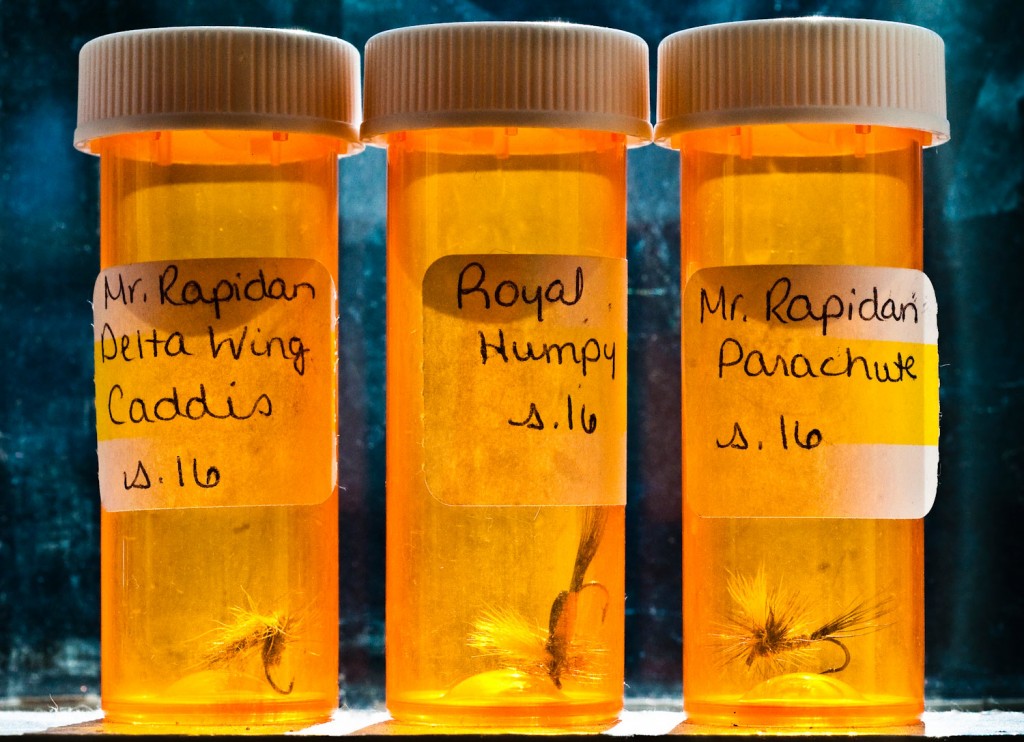
“Gone Fishing! Great way to start the New Year with a little father / son outing.”
That’s what Harry Murray’s Facebook status read on New Year’s day. I was thrilled, and confused. You see, I had heard through the fly fishing grapevine the Harry had passed away. For those of you who do not know, Harry is the Dean of Virginia fly fishing. Although I don’t know Harry personally we have a lot of connections. His fly shop in Edinburg, VA opened in 1962, the year I was born. My grandfather knew Harry and frequented his shop back when it was a pharmacy. (Harry is a pharmacist who ended up in the fly fishing business.) I still have some of Harry’s flies in the old pill bottles he used to pack them in. It was Harry who introduced my good friend Gary Lacey to bamboo rod making. Gary is now one of the best rod makers in the world and taught me to make rods fifteen years or so ago. When I heard that he had passed I couldn’t believe it. I just wasn’t ready for a world without Harry Murray.
It made me think of the morning last year when I answered my phone at eight a.m. To hear my good friend Andrew Bennett, breathless on the other end. He wasn’t really talking and it was clear something was wrong. It spooked me because Andrew is as tough a guy as you are likely to meet. Not easily shaken up. “Are you alright?”
Read More »Hook Sets Are Free
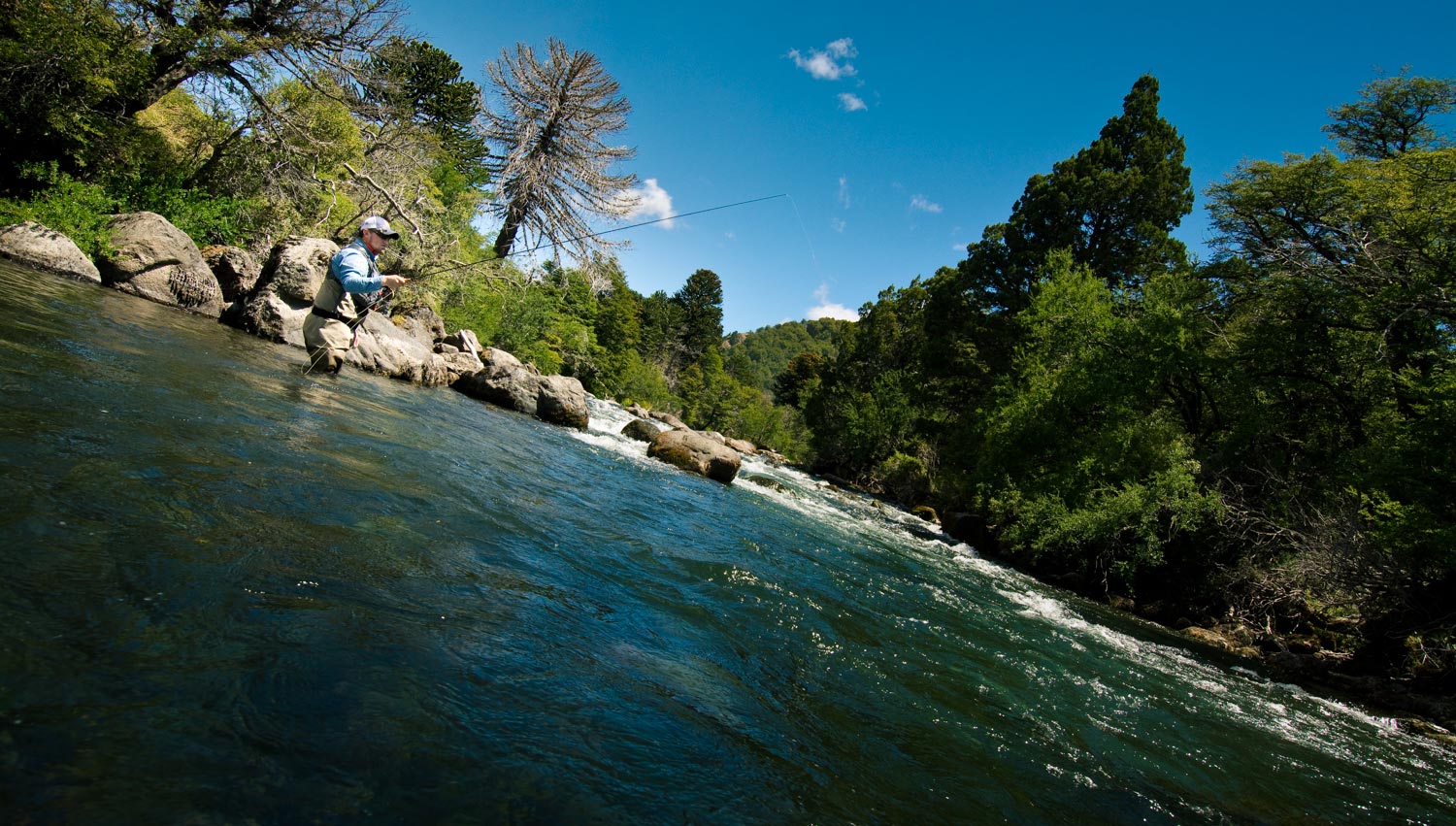
By Justin Pickett
A FLUFFY, WHITE INDICATOR IS DRIFTING MERRILY ALONG THE CURRENT WHEN SUDDENLY IT IS YANKED FROM SITE, ONLY TO EMERGE A SECOND LATER TO CONTINUE ITS VOYAGE DOWNSTREAM BEFORE BEING LIFTED FROM THE WATER’S SURFACE.
Surprised, I look back at my buddy. “What was that?”
To which he replies, “What?”
“Why didn’t you set the hook?”
He came back at me with what many anglers often do in this situation, “I thought it was bottom.”
He THOUGHT he had just been momentarily stuck on the bottom of the streambed, so he didn’t feel the need in ruining his drift by setting the hook, when, in reality, he likely just missed out on hooking up with a trout.
Thinking and knowing are two very different things. Unless you can physically see your fly/flies drifting through the column, you certainly can’t assume that your fly is snagged on the bottom each time your indicator bobs under the water. So what should you do?
Set the hook!
Read More »Fly Fishing Runoff Can Mean Fish On

by Johnny Spillane
HAVE YOU EVER SHOWED UP AT A RIVER AND FOUND THAT INSTEAD OF THE CRYSTAL CLEAR WATER YOU WERE EXPECTING, YOU’RE STARING AT CHOCOLATE MILK?
Here in the Rocky Mountain this is a relatively common experience. It can happen for a number of reasons, huge rainstorms, someone doing river work above you or just your normal spring runoff. Don’t fret; while it might not be ideal, here are a few tips that can help you find some fish.
If the water is only slightly off color, you can basically use the same flies that you would if it was clear, just make everything a size or two larger. Instead of a size 18, put on a 16 or a 14. If that is not working, try adding a little bit more flash to your rig. We typically use flies with very little flash, but if the water is off color it can make a big difference in the amount of fish you stick just by changing to something that will reflect a little more light. If you were using a pheasant tail, try tying on a flash back pheasant tail and sometimes that is the only thing you will need to change.
If the water looks like chocolate milk, go big and go flashy. Those size 22 zebra midges that you planned on tying to 6x, that aint gonna work. I like to tie on a large white zonker and dead drift it with some sort of big buggy stonefly like a Pats Rubber leg. In off color water, fish will lose some of their inhibitions and hit anything that they can see. You just have to make sure that they see it. This is also a great time to experiment with different streamers that make noise, anything that will help draw a fish towards you fly.
Fishing runoff can also be one of the best times to hit a river. If it is fully blown, it might be better to explore other options but if a river is on the downside of its peak flows and it is starting to clear up, fishing can be phenomenal. Fish that are spread out all over the river during normal flows will congregate in areas of softer water during runoff and usually if you find one fish, you find 20. When the river is really high
Read More »